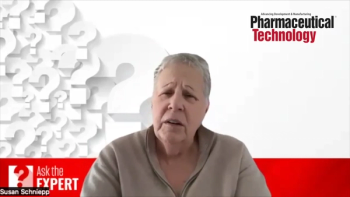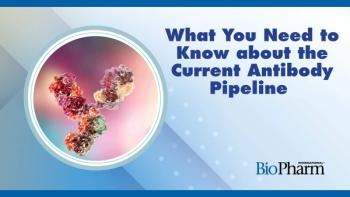
- BioPharm International-01-01-2018
- Volume 31
- Issue 1
FDA Drug Approvals Hit Record Levels in 2017
Gene therapies highlight FDA new drug approvals in 2017.
The small number of new drug approvals in 2016, only 22 (1), may have been an anomaly. As of Nov. 14, 2017, FDA’s Center for Drug Evaluation and Research (CDER) approved 38 new drugs in 2017 (2) and was on track to achieve numbers similar to the 41 approvals in 2014 (3) and 45 approvals in 2015 (4). The approved drugs include a number of firsts in drugs for untreated diseases and new modes of action. Nearly two-thirds were approved under one or more accelerated pathways and just over one-third were designated as orphan drugs.
Healthy market for APIs
Given the return to record-level FDA approvals, it is not surprising that most industry analysts predict strong growth in the market for APIs. Markets and Markets, for instance, predicts the global API market, including chemical and biologic branded and generic-drug substances, will expand at a compound annual growth rate of 6.3% from $157.95 billion in 2016 to $213.97 billion in 2021 (5). Market research firm Grand View Research predicts the value of the global API market will reach $239.8 billion by 2025 (6).
Growth is attributed to an aging population with a concomitant rise in age-related diseases and an increase in lifestyle-induced conditions and cancer. Small-molecule APIs account for the greatest share of the market (6), which reflects the rate of approvals for drugs based on chemical and biologic APIs; in 2017 nearly 75% of the approved drugs as of November 14 were formulated with small-molecule APIs (2).
Captive manufacturers held the greatest market share, but due to increased outsourcing of API manufacturing, contract manufacturers are expected to expand their share more rapidly in the coming years. Demand for generic APIs is also increasing rapidly (6).
Biologic-based drugs and gene therapies
Nearly one-quarter of the drugs approved by CDER were biologic-based drugs (Table I). Although not approved by CDER and thus not appearing on its list of novel approved drugs (2), FDA, through the Center for Biologics Evaluation and Research, has approved gene therapies for the first time in 2017.
The first, Kymriah (tisagenlecleucel) from Novartis, was approved in August and is a chimeric antigen receptor (CAR) T-cell immunotherapy for the treatment of patients up to age 25 years with B-cell precursor acute lymphoblastic leukemia (7). Kymriah was approved under Priority Review with the Breakthrough Therapy designation.
At the same time, FDA expanded the approval of Actemra (tocilizumab) from Genentech for the treatment of patients two years of age or older with cytokine release syndrome that occurs with CAR T-cell therapy. Because of the risk of cytokine release syndrome (CRS) and neurological events, Kymriah is being approved with a risk evaluation and mitigation strategy (REMS), which includes elements to assure safe use (ETASU). FDA is requiring that hospitals and their associated clinics that dispense Kymriah be specially certified and trained to recognize and manage CRS and neurological events.
The second, Yescarta (axicabtagene ciloleucel), is also a CAR T-cell therapy, but for the treatment of adult patients with certain types of large B-cell lymphoma who have not responded to or who have relapsed after at least two other kinds of treatment (8). Yescarta was approved under Priority Review and had both Breakthrough Therapy and Orphan Drug designations. Yecarta was approved with a similar REMS.
Many accelerated approvals
Manufacturers continue to leverage the four expedited review and approval programs--Fast Track and Breakthrough Therapy Designations and Accelerated Approval and Priority Review processes--made possible with passage of the FDA Safety and Innovation Act (FDASIA) in 2012. FDA, under Commissioner Scott Gottlieb, is also committed to accelerating the approval of new drugs (9). Nearly two-thirds (24 out of 38, 63.2%) of the drugs approved in 2017 through mid-November were filed under at least one of these four programs. Of those 24 drugs, just over one-third qualified for two programs, and nearly 16% for three. Of the four programs, 22 drugs were approved under Priority Review, 14 as Breakthrough Therapies, eight with the Fast Track designation, and six with Accelerated Approval.
More orphan drugs
The Orphan Drug Act (ODA) was passed in January 1983 to encourage the development of drugs to treat rare diseases. Drugs intended to prevent, treat, or diagnose a disease/condition that occurs in less than 200,000 patients in the United States may be designated as an orphan drug. Developers also can receive tax credits for clinical research expenses and seven years of marketing exclusivity upon FDA approval.
In the 10 years prior to passage of the ODA, the pharma industry commercialized only 10 products for rare diseases; since 1983, more than 450 orphan drug products have been approved for more than 600 indications (10). In addition, 60% of the 87 Breakthrough Therapies approved from January 2013 to Sept. 15, 2017 are indicated for rare diseases and accounted for 25% of the orphan drug approvals. Nearly 75% of orphan drugs received Priority Review. In 2017, 13 of the 38 new drugs approved through November 14, or 34%, were classified as orphan drugs.
Lots of generic approvals, too
FDA approved a record number of abbreviated new drug applications (ANDAs)--763 approvals and 174 tentative approvals--in fiscal year 2017 (11), compared with 639 ANDA approvals and 183 tentative approvals in fiscal year 2016 (12). Not only were more ANDAs approved in 2017 compared to 2016, a much higher number of ANDAs was received as well.
In addition, as of Nov. 28, 2017, FDA had approved 65 first generics (13)-or products that are the first generic competitors to their branded counterparts-and looks to be on track to meet or exceed last year’s figure of 73. The increased rate of approvals is attributed to an increase in FDA personnel by nearly 1000 as a result of funds collected through the Generic Drug User Fee Amendments. FDA has also prioritized the approval of generics to help reduce drug costs.
References
1. FDA, “
2. FDA, “
3. J. Jenkins, “
4. FDA, “
5. Markets and Markets, Active Pharmaceutical Ingredients/API Market by Type (Innovative, Generic), Manufacturer (Captive, Merchant), Synthesis (Synthetic, Biotech), Product (mAb, Hormone) Drug (OTC, Rx), Therapy (Diabetes, Oncology, CNS, CVD) - Global Forecast to 2021, January 2017.
6. Grand View Research, “API Market Size Worth USD 239.8 Billion By 2025,” Press Release, January 2017.
7. FDA, “FDA Approves tisagenlecleucel for B-cell ALL and Tocilizumab for Cytokine Release Syndrome,” Press Release (Silver Spring, MD, Aug. 30 2017).
8. FDA, “FDA Approves CAR-T Cell Therapy to Treat Adults with Certain Types of Large B-cell lymphoma,” Press Release (Silver Spring, MD, Oct. 18, 2017).
9. B. Norman, S. Karlin-Smith, and B. Griffiths, “
10. M. Lanthier, “
11. FDA, “A
12. FDA
13. FDA, “
Article Details
BioPharm International
Volume 31, Number 1
January 2018
Pages: 12–14
Citation
When referring to this article, please cite it as C. Challener, “FDA Drug Approvals Hit Record Levels in 2017," BioPharm International 31 (1) 2018.
Articles in this issue
almost 8 years ago
Selecting and Installing Peristaltic Pump Tubingalmost 8 years ago
Additional Size for Quaternary Diaphragm Pumpsalmost 8 years ago
Single-Use Filling Assemblies for Aseptic Fill/Finish Applicationsalmost 8 years ago
Surveys Redefine “Ready”almost 8 years ago
Moving Toward Open Standard Specifications for Serialization Integrationalmost 8 years ago
Process Monitoring and Control Technologies Optimize Operationsalmost 8 years ago
Bio/Pharma Serialization Nears a Tipping Pointalmost 8 years ago
Science and Funding Inject Excitement into Biopharmaalmost 8 years ago
Milestones Mark Progress and Challengesalmost 8 years ago
Evolving UF/DF CapabilitiesNewsletter
Stay at the forefront of biopharmaceutical innovation—subscribe to BioPharm International for expert insights on drug development, manufacturing, compliance, and more.




